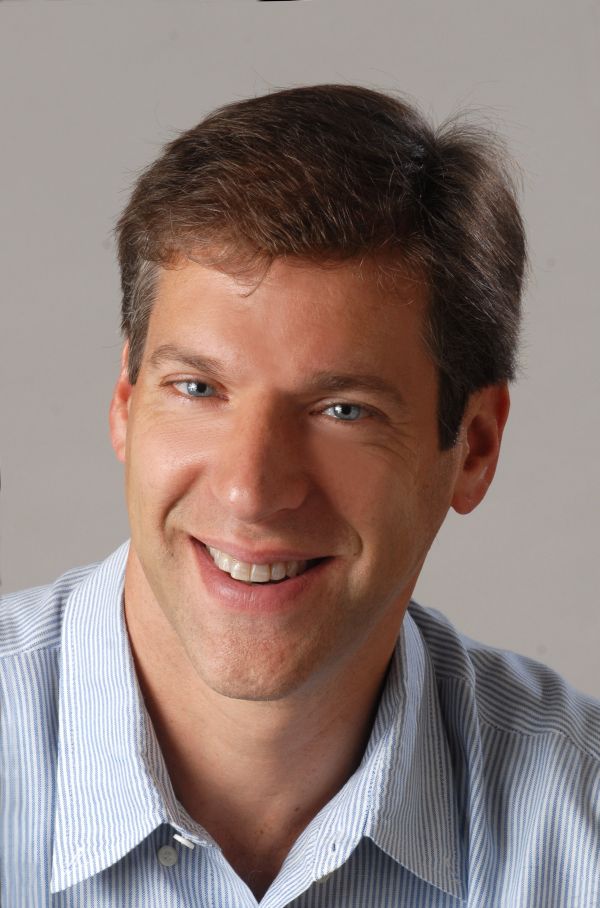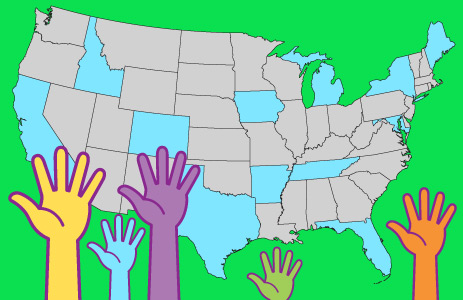 Daniel M. KammenLast Thursday brought the intriguing news that the World Bank would be bringing on energy expert Dan Kammen to coordinate its efforts on energy efficiency and renewables. Kammen is among the world’s leading authorities on those subjects. He runs the Renewable and Appropriate Energy Laboratory at UC-Berkeley, where he is a professor of both energy and public policy. He was a coordinating lead author on the Intergovernmental Panel on Climate Change reports, and serves as a frequent advisor to political and NGO leaders.
Daniel M. KammenLast Thursday brought the intriguing news that the World Bank would be bringing on energy expert Dan Kammen to coordinate its efforts on energy efficiency and renewables. Kammen is among the world’s leading authorities on those subjects. He runs the Renewable and Appropriate Energy Laboratory at UC-Berkeley, where he is a professor of both energy and public policy. He was a coordinating lead author on the Intergovernmental Panel on Climate Change reports, and serves as a frequent advisor to political and NGO leaders.
As of Oct. 4, he will be the bank’s Chief Technical Specialist for Renewable Energy and Energy Efficiency. I called on Friday to ask him about the new gig.
——
Q. There’s been a lot of controversy around World Bank financing of big fossil-fuel projects. Was your position created in response to the criticisms?
A. I don’t know the full details. My perception is no, that it’s not a direct response.
There’s been criticism over the big South African coal project, where the U.S., Britain, and others abstained from voting. Obviously there have been other controversies — there’s the famous book Confessions of an Economic Hit Man, a book called Lords of Poverty, all about the World Bank lending and problems, and I think those stories are true and well-documented.
My sense is, because World Bank lending hasn’t gone away, there has been a big push for sustainability. There is now a very well-staffed, thoughtful, and responsive vice presidency in the World Bank called the Sustainable Development Group. My boss, Inger Andersen, is the VP; I’m very impressed with her.
My feeling is that sustainable development has become central to many people’s planning, and that’s true of the World Bank and other development groups as well. Part of the reason why they created this position and why I was interested to take it is that the fastest growing sector within the energy space of the whole World Bank lending group is energy efficiency and renewables. It’s now several billion dollars a year in that area alone. The World Bank also appointed an interesting and impressive individual [Andrew Steer] to be the head of their climate change portfolio. I see this as a World Bank-wide and development agency-wide effort to green, in the broadest sense, what they’re going to do.
The World Bank has a research arm that most commercial banks do not have. There’s been a series of really important papers coming out of the bank for two decades now, highlighting everything from green jobs to local sustainability to poverty issues. The global consensus, not just within the Bank, is that one needs to pay much more attention to [clean energy]. Having countries like Germany, Denmark, Japan show real successes in deploying green energy has highlighted these are real sectors, not “desirable but small-scale.” Twenty years ago, a friend of mine wrote a famous paper about renewable energy called “The Cinderella Options” — it was what everyone wanted to take to the ball, but it wasn’t serious. That’s totally changed; it’s gone mainstream, and the World Bank is responding.
Many technologies on the clean side are just now commercially competitive, or they’re going to be there soon. But even if you’re commercially competitive, that doesn’t necessarily mean you can get market share. We have lots of structural barriers that favor incumbents. And the World Bank is really good at deployment; they have huge field teams around the world.
Q. Is your job advisory or educational, or will you be looking for projects to fund?
A. It’s not an easy answer. I’ll have a role in both, which may shift as we go ahead. One of my immediate tasks is working on a substantial road map and vision for low-carbon technologies, a whole series of related papers, by January 2011.
I will be less involved in developing individual projects — though I’ll have some role in that — than in making sure the bank’s portfolio of commercial projects and experimental efforts reflects the cutting edge of knowledge in this area.
Q. Are you going to push them to be more ambitious than they’re inclined to be, or is there already momentum behind it?
A. The World Bank is a huge organization; it’s not a single thing. There are certainly people within Sustainable Development already doing cutting-edge, innovative things there. Other sectors are less progressive in this regard. My goal is to work with the types of projects that can naturally be expanded at the Bank and try to open new areas. I certainly come in with a number of technology and policy examples I think have been successful where they’ve been deployed and are ready to be scaled up.
The World Bank has already done work on estimating the costs of externalities, be it carbon, water, or social justice. Because all banks appeal to a bottom line, an attractive part of that process is looking at how one can make the pricing of sustainability part of the basic working, not just of the World Bank, but of all banks.
But I’ve got a lot to learn from them. There’s a lot of experience in what’s worked and what hasn’t in real “bankable projects” that I need to internalize first.
Q. The climate bill process fell apart in Congress this year and it seems like the U.N. process isn’t headed for a big treaty either. How can things actually get done?
A. There’s no simple answer to that. When we look back at the Montreal Protocol and CFCs, people thought that process looked impossible until a few companies and countries realized that cleaning circuit boards without CFCs might actually save them money and be more effective. A couple successes turned a story that looked like it was going to be a failure into one that we all look back now and say, “Oh, that was easy by comparison.”
I’m not sure exactly how many successes we need to tip the balance so that a big treaty is possible, but no group is better positioned than the World Bank to facilitate them.
Q. So more successes on the ground lend more momentum to the process?
A. Right. In the long term, every bit of analysis I do in my research life suggests that we absolutely need a price on carbon — we need these externalities priced. But in my home state of California, in our climate bill, most of the reductions in the next decade are going to come through sectoral programs, not through the carbon market. Our carbon market’s a critical part of the story long term, but Mary Nichols, head of the Air Resources Board, has a portfolio of individual goals within the vehicle sector, buildings, etc. Those things are going to do the heavy lifting now.
I see the World Bank playing a similar role. It can do important national or regional projects as of tomorrow morning — they’re already doing many today — but they can also be the driver for this broader glob
al agreement. They are incredibly well-positioned, despite their complicated past, to make this happen. That’s why it’s so neat.
Q. What have you been doing since advising the Obama campaign two years ago?
A. Outside of academia, since April I’ve been serving Hillary Clinton as the [State Department’s] first energy and climate fellow, kind of an informal envoy or liaison to Latin America. I’m not a State Department employee, I’m not vetted by the Senate, but I do travel around meeting with government and academic groups, usually in conjunction with the local embassies, and look for places for clean energy collaboration.
Q. Will you continue with the job after you join the World Bank?
A. This is tricky. We don’t quite know yet, because World Bank employees of course need to be country-neutral. I can’t represent a country. The State Department would like to continue the relationship in some form, and I’d be happy to, but it needs to be something where I would travel as a World Bank representative on energy efficiency and renewables, though I could certainly meet up with people from the U.S. embassy. Since I don’t start at the World Bank until Oct. 4, we’ll wait and find out what works for them.



